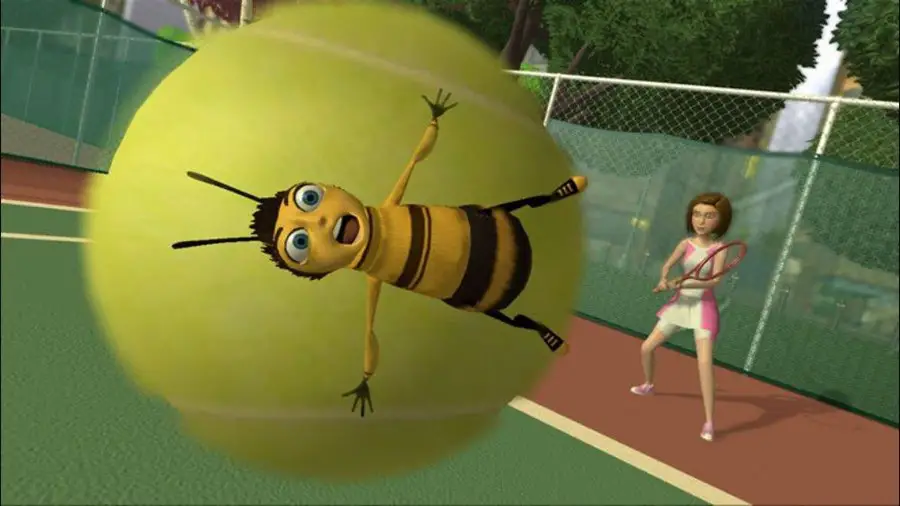“Bee Movie” is one of the most important movies for understanding the climate crisis and how it relates to bees. Since its original release in 2007, the film has cemented its status as a staple of meme culture. The best example of this phenomenon is YouTube user Avoid at All Costs’ video. The video compresses “Bee Movie” into a mere seven minutes, a feat achieved by speeding up the movie every time a character says the word “bee.” Memes also abound on Tumblr and Twitter, and, if you really want to, there are websites where you can purchase a t-shirt featuring the “Bee Movie” script shrunken into an illegible block of text.
Despite efforts to discredit “Bee Movie” as a ridiculous piece of children’s media, it remains culturally relevant. And with the dramatic decline in bee populations around the world threatening food security, it’s time to re-examine “Bee Movie” to see what lessons can be learned from it 16 years later.
The movie follows Barry B. Benson (Jerry Seinfield), a recent college graduate who becomes disillusioned with life when he realizes that he will spend the rest of his life working for Honex Industries to support the hive. After journeying outside the hive and meeting a florist named Vanessa (Renée Zellweger), Barry discovers that humans are exploiting bees for their own personal profit through the production of various honey products. To combat this injustice, he sues the human race and wins. The bees are freed from their oppressive condition but not without serious consequences: Without pollination, the beauty of the natural world fades to gray and Vanessa is forced to close her flower shop.
Barry and Vanessa eventually save the day by stealing a parade float from the Tournament of Roses Parade and flying it back to New York City where hundreds of bees are waiting to use the flowers to recommence pollination. In the end, the bees and humans cut a fair-trade deal of sorts once everyone understands the pollinators’ crucial role within the ecosystem. While the “Bee Movie” plot is almost too outlandish to be bee-lieved (the bee puns abound), it holds a grain of truth for how humans today need to approach their interactions with bee populations, especially given climate change and vanishing habitats.
Most species of bees aren’t designed to handle rising global temperatures. Frequent droughts and wildfires destroy both bees’ food sources and environment, forcing them to migrate.
Furthermore, changing temperatures affect bees during different seasons. Just because spring arrives earlier than it has previously doesn’t mean that bees are able to adjust and pollinate the flowers that are also blooming too early.
Habitat destruction is another major problem endangering bee populations. Ironically, the very industry that depends on pollinators like bees is the one doing them the most harm. In order to create more space to produce food, the agricultural industry resorts to deforestation and pesticides to clear land. These practices limit where bees can build their colonies and poison the plants that they feed on. To cope with these newfound stressors, bees are surprisingly migrating to cities to set up shop. A study from the UK found that, on average, more species of bees are located in cities than in the countryside, with over 50% of these species buzzing around London alone.
While this movement from rural to urban areas may seem like a positive indication that bees can adapt to their changing environments, cities introduce bees to an onslaught of new problems. In “Bee Movie,” the challenges of city life are humorously reflected in the scenes where Barry gets stuck to a tennis ball or when, during a showdown with Vanessa’s boyfriend, Ken, he escapes certain death by surfing on a nail file in a toilet bowl. In real life, pollution, smog, and lack of green spaces pose the greatest threat to bees’ livelihood.
Some people have taken it upon themselves to adopt beekeeping as a hobby to bolster declining bee populations and aid with pollination. The problem with this endeavor, however, is that much of the public remains uneducated about what species of bees are native to where they live.
Simply introducing honey bees, the type of bee that often comes to mind when people think of pollination (Barry is a honey bee after all), to a given area can overwhelm wild bee species that may already be dealing with scarce resources. Commercial beekeepers, who typically have thousands of hives within their apiaries, are having to move their domesticated honey bees onto public lands to keep up with honey production and pollination of crops vital to the US economy. Despite the proliferation of honey bees, wild bees may be better suited for pollinating plants indigenous to the Americas. For example, the bumblebee is native to North America. Its extra fuzzy body, which allows it to carry more pollen than the average honey bee, combined with varied tongue length makes it better suited to pollinate plants like tomatoes and peppers.
So what, then, can be done to save the bees? The answer is thankfully much simpler than bringing a lawsuit against all of humanity. Rather, education is the best tool available. Understanding which bees are native to certain areas and what plants they need to flourish is crucial to their survival. Planting pollinator gardens and protecting spaces where bees have already developed hives is an easy place to start. Just like the “Bee Movie” conclusion demonstrates, humanity needs to work with bees, not against them, in order for the entire ecosystem to thrive.

















